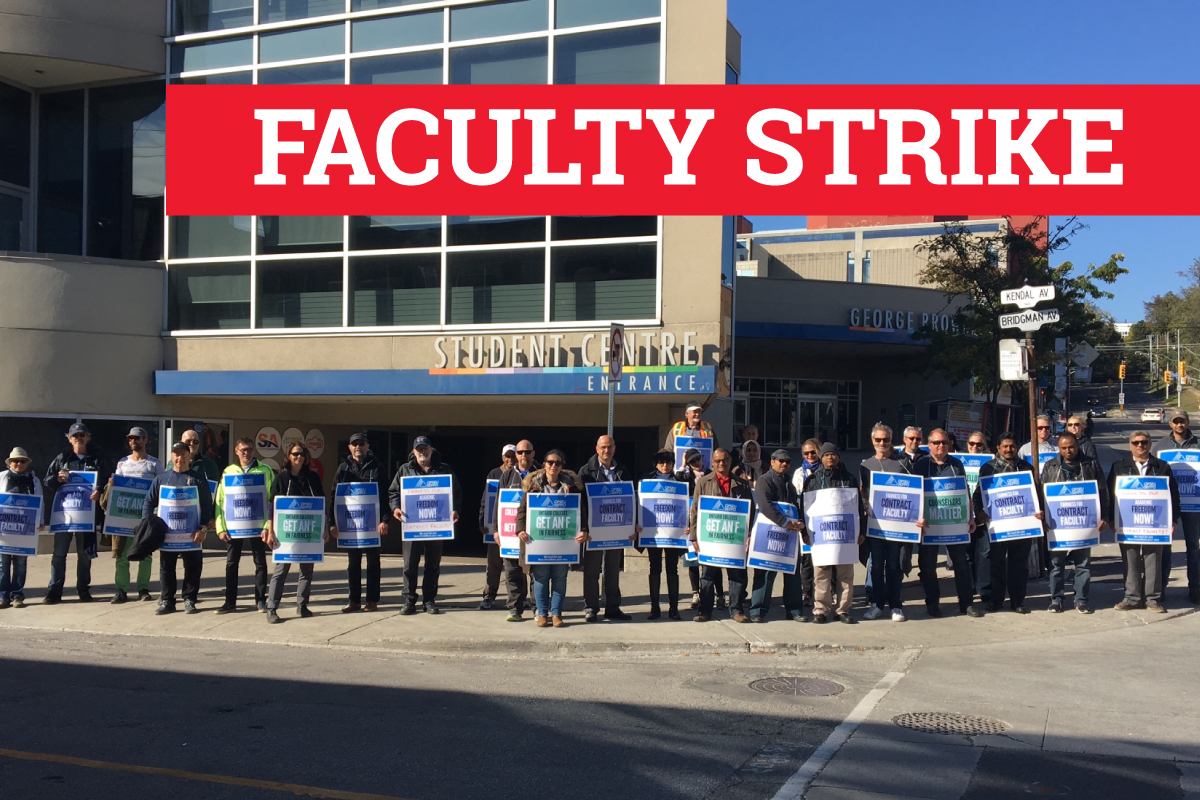Faculty strike averted at Ontario colleges as both sides agree to a deal! After weeks of tense negotiations, Ontario college faculty and administration reached a last-minute agreement, avoiding a potentially disruptive strike that would have impacted thousands of students. This deal marks a significant turning point, addressing key concerns on both sides and paving the way for a smoother academic year.
Let’s dive into the details of this hard-fought compromise.
This article will explore the key provisions of the agreement, analyzing the concessions made by both faculty and college administrations. We’ll examine the impact on students, both the disruption during negotiations and the future effects of the agreement. Faculty and college perspectives will be presented, highlighting the diverse viewpoints within each group. Finally, we’ll consider the broader implications for Ontario’s post-secondary education system and its potential influence on future collective bargaining.
The Ontario College Faculty Strike Averted: An In-Depth Analysis

The recent agreement between Ontario college faculty and the college administration averted a potentially devastating strike. This agreement, reached after intense negotiations, has significant implications for students, faculty, colleges, and the broader post-secondary education landscape in Ontario. This analysis delves into the key provisions of the agreement, its impact on various stakeholders, and its long-term consequences.
The Agreement’s Key Provisions
The agreement between the Ontario college faculty and the college administration addressed several key issues. Both sides made concessions, leading to a compromise that avoided a strike. While specific details may vary from previous agreements, this one notably focuses on workload, compensation, and job security. This contrasts with previous agreements that often prioritized budget constraints over faculty concerns.
| Provision | Faculty Impact | College Impact | Long-term Implications |
|---|---|---|---|
| Increased Compensation | Higher salaries and improved benefits packages. | Increased operational costs. | Potential for higher tuition fees or increased government funding requirements. |
| Workload Adjustments | Reduced teaching loads and increased time for research and professional development. | Potential need for increased hiring or reallocation of resources. | Improved faculty morale and potentially higher quality of teaching. |
| Improved Job Security | Enhanced protections against layoffs and precarious employment. | Increased budgetary commitments to staffing. | More stable and experienced faculty workforce. |
| Professional Development Opportunities | Access to funding and resources for professional growth. | Investment in faculty training and development. | Enhanced teaching quality and student learning outcomes. |
Impact on Students

The averted strike significantly impacts students. The negotiation period caused uncertainty and potential disruption to academic schedules. The agreement’s positive effects on faculty workload and morale could translate into a better learning environment. However, potential increases in tuition fees remain a concern.
The following infographic illustrates potential impacts:
Infographic Description: A simple bar graph visually compares positive and negative impacts on students. Positive impacts (improved teaching quality, reduced course cancellations, stable learning environment) are represented by upward-pointing green bars, while negative impacts (potential tuition increases, lingering anxiety from near-strike situation, possible adjustments to course scheduling) are represented by downward-pointing red bars. The lengths of the bars visually represent the relative magnitude of each impact, with positive impacts ideally outweighing negative ones.
Whew! That faculty strike at Ontario colleges is officially over; both sides found common ground. It’s a relief, kind of like hearing about exciting architectural news, like how Allies & Morrison picked for ‘groundbreaking’ transformation of some major project. Anyway, back to the colleges – hopefully, classes resume smoothly now that the agreement’s in place.
A clear title, “Impact of Faculty Agreement on Students,” is displayed above the graph, with labels clearly identifying each impact on the x-axis and a scale of impact on the y-axis (e.g., low, medium, high).
Good news! The faculty strike at Ontario colleges is officially over, thanks to a last-minute agreement. Need a way to celebrate? Check out this awesome giveaway: Three signed shirts up for grabs in bumper MyLFC giveaway ! It’s a perfect way to unwind after all that stressful news. So breathe a sigh of relief – classes are back on track!
Faculty Perspectives

Faculty perspectives on the agreement are varied. Some are highly satisfied with the improvements in workload, compensation, and job security. Others express concerns about the long-term financial implications or the speed of implementation. A significant portion feels the agreement represents a fair compromise given the circumstances.
So, the Ontario college faculty strike is off – thankfully! It’s a relief for students, but sometimes even good news makes you think of other things. For instance, did you hear about Denise Richards’ 2022 Road Rage Gun Incident: What to Know ? It’s a wild contrast to the college negotiations, isn’t it? Anyway, back to the good news: classes should resume normally at Ontario colleges.
- Highly Satisfied: Faculty members who believe the agreement significantly addresses their key concerns regarding workload, compensation, and job security.
- Moderately Satisfied: Faculty who acknowledge improvements but have reservations about specific aspects of the agreement, such as the timeline for implementation or potential future budgetary constraints.
- Unsatisfied: Faculty who feel the agreement does not adequately address their concerns or believe the concessions made were insufficient.
College Administration’s Position, Faculty strike averted at Ontario colleges as both sides agree to
The college administration’s negotiating strategy aimed to balance the needs of faculty with the financial realities of the college system. The agreement reflects a commitment to maintaining a high-quality educational experience while ensuring the long-term financial sustainability of the colleges. Challenges included navigating competing demands and balancing budgetary constraints with faculty expectations.
Timeline of Key Events (Example):
- [Date]: Initial contract negotiations begin.
- [Date]: Faculty union issues a strike mandate.
- [Date]: Mediation attempts commence.
- [Date]: A tentative agreement is reached.
- [Date]: Agreement is ratified by faculty.
Broader Implications for Ontario’s Post-Secondary Education System
This agreement sets a precedent for future collective bargaining in Ontario’s colleges. The outcome will influence negotiations in other sectors of post-secondary education. The long-term financial implications will require careful monitoring, particularly regarding government funding and potential tuition adjustments. The agreement’s success in avoiding a disruptive strike contributes to the overall stability of the college system. Comparisons with similar agreements in other Canadian provinces will provide valuable insights into national trends in post-secondary education labor relations.
Last Point

The averted faculty strike at Ontario colleges represents a crucial moment for the province’s post-secondary education system. The agreement, born from compromise and negotiation, not only prevents immediate disruption but also offers a glimpse into the future of labor relations within the college sector. While the long-term effects remain to be seen, this deal underscores the importance of collaboration and dialogue in resolving complex issues within higher education.
The successful avoidance of a strike highlights the potential for positive outcomes when both sides prioritize the needs of students and the overall health of the educational system.
General Inquiries: Faculty Strike Averted At Ontario Colleges As Both Sides Agree To
What were the main sticking points in the negotiations?
Common sticking points often include salary increases, benefits, workload, and job security. Specific details would depend on the released agreement.
How long were negotiations ongoing before the agreement?
The exact duration will be detailed in news reports following the agreement. Negotiations often span several weeks or months.
What happens now that the strike has been averted?
Colleges will resume normal operations, and students can expect classes to continue as scheduled. The details of the agreement will be implemented.
